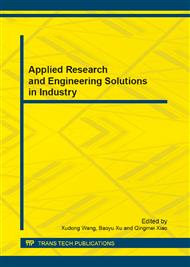p.254
p.258
p.262
p.268
p.273
p.277
p.282
p.287
p.292
Vibration of Press Based on Operational Modal Analysis
Abstract:
Press vibration characteristic is the basic of press fault diagnosis and static optimization. We get press vibration characteristics with Operational Modal Analysis .Comparing theoretical analysis of the finite element method for press with operation modal analysis of test method for press in the actual condition. We get vibration modal orders and vibration modes of press wallboard under natural excitation. The experimental results show that the test modal frequency identification value of Operational Modal Analysis for the press components is highly accurate.
Info:
Periodical:
Pages:
273-276
Citation:
Online since:
February 2013
Authors:
Price:
Сopyright:
© 2013 Trans Tech Publications Ltd. All Rights Reserved
Share:
Citation:


